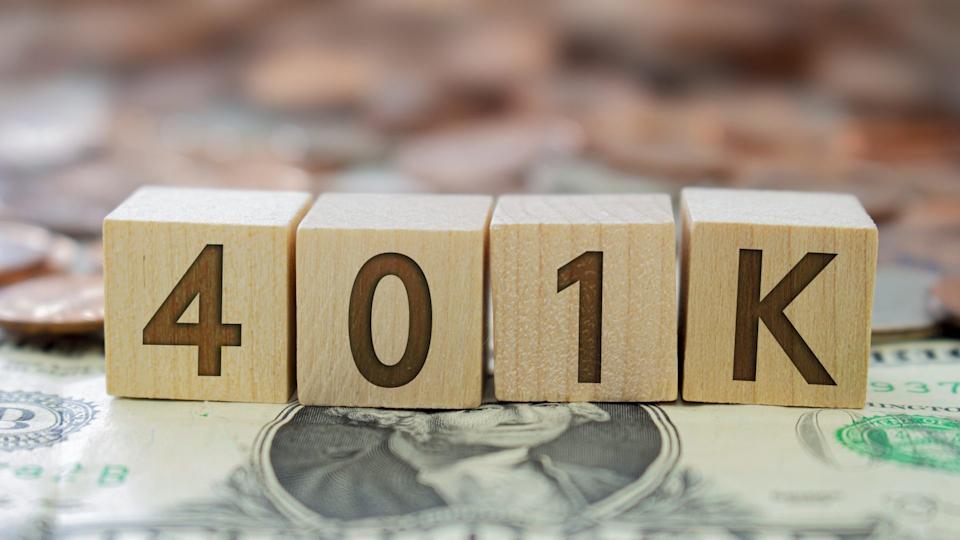Don’t Touch Your 401(k) Until You Reach This Milestone

A 401(k) plan, if you have access to one, can be the best single source of retirement income for you. But to get the most value out of your 401(k), you’ll need to let the power of tax-deferred compound interest work its magic.
Social Security Cuts: States That Would Be Impacted the Least
Read More: What Income Level Is Considered Middle Class in Your State?
Although the IRS makes it difficult to take money out of a 401(k) prematurely, there are instances in which you’re allowed. But that can be a huge mistake. In addition to paying taxes and penalties on your early withdrawal, you’ll be diminishing the future value of your nest egg, perhaps significantly.
For these reasons, it’s almost always best to avoid touching your 401(k) until those penalties are removed. Read on to learn about when that is, the damage that early withdrawals can do, and the limited cases in which they may possibly be appropriate.
Sponsored: Get Paid To Scroll. Start Now
When Are 401(k) Penalties Applied, and What Are They?
Since a 401(k) is intended as a retirement plan, the IRS imposes early withdrawal penalties if you take money out before you reach age 59 ½. Specifically, you’ll owe a 10% penalty on such withdrawals, in addition to ordinary income tax on any amounts you take out. This means that depending on your federal and state tax brackets, you could end up paying more than 50% of your withdrawal in taxes and penalties.
Generally speaking, even if you’re willing to take the penalty, you are only allowed to take money out of your 401(k) under very limited circumstances, including a financial hardship. But financial hardships are limited to the following situations, per the IRS:
Expenses for medical care previously incurred by the employee, the employee’s spouse, or any dependents of the employee or necessary for these persons to obtain medical care
Costs directly related to the purchase of a principal residence for the employee (excluding mortgage payments)
Payment of tuition, related educational fees, and room and board expenses, for the next 12 months of postsecondary education for the employee, or the employee’s spouse, children, or dependents
Payments necessary to prevent the eviction of the employee from the employee’s principal residence or foreclosure on the mortgage on that residence
Funeral expenses
Certain expenses relating to the repair of damage to the employee’s principal residence that would qualify for the casualty deduction under IRC § 165
Even under these scenarios, you’ll still be liable for taxes and penalties if you’re under 59 ½.
Florida’s Retirees Are Fleeing: Here’s Where They’re Going Instead
What Are the Exceptions to the Early Distribution Penalty?
There are a few, very limited exceptions to the early distribution penalty for 401(k) plans. Most of them, however, are situations that you don’t likely want to find yourself in. Here are the types of 401(k) distributions that aren’t subject to the 10% early withdrawal penalty, per the IRS:
Permissive withdrawals from a plan with auto enrollment features
Corrective distributions (and associated earnings) of excess contributions, excess aggregate contributions and excess deferrals, made timely
After death of the participant
Total and permanent disability of the participant
To an alternate payee under a Qualified Domestic Relations Order
Series of substantially equal payments
Because of an IRS levy of the plan
Amount of unreimbursed medical expenses
Certain distributions to qualified military reservists called to active duty
Eligible distributions contributed to another retirement plan or IRA within 60 days
The employee separates from service during or after the year the employee reaches age 55 (age 50 for public safety employees of a state, or political subdivision of a state, in a governmental defined benefit plan)
In most cases, the easiest way to avoid the 10% early withdrawal penalty is to simply wait until age 59 ½.
How Much Do Early 401(k) Withdrawals Hurt Your Future Nest Egg?
The easiest way to see how much early 401(k) withdrawals hurt your future nest egg is to use real numbers.
Imagine that you take $10,000 out of your $50,000 401(k) balance at age 30, and that you earn 8% annually on your account. Assuming no additional contributions, your $40,000 would grow to about $650,000 by the time you reach age 65. That’s not bad. But if you had left the full $50,000 in your account, you’d be looking at a balance closer to $815,000. That’s a whopping $165,000 extra, or 25%. In other words, that relatively small $10,000 withdrawal may end up costing you 16.5 times as much in terms of your final nest egg.
Thanks to the power of compound interest, it’s always wise to only consider a 401(k) hardship withdrawal as an option of absolute last resort.
More From GOBankingRates
How to Get $340/Year in Cash Back -- for Things You Already Buy
4 Reasons You Should Be Getting Your Paycheck Early, According to An Expert
10 Ways to Turn Your Six-Figure Salary Into Generational Wealth
This article originally appeared on GOBankingRates.com: Don’t Touch Your 401(k) Until You Reach This Milestone
